When mom taught me to make gobi paratha, I learned more than how to cook
As a kid, it’s easy to take a home-cooked meal for granted.
It wasn’t until I moved 860 miles and four states away for college that I realized the amount of effort, love and care that goes into cooking.
It was difficult for me to cook a meal for one (and still is) and I began to wonder how my mom fed our family of four so seemingly effortlessly growing up. Far from home, at 18 I started to crave my mother’s Indian food for the first time. I also missed the joy on her face when she would ask my sister and me if we wanted another roti or more dal.
Throughout those four years at college, I visited home enough to get my fill of my mother’s cooking, but when I took a new job here in Phoenix, my trips back home to Boston became less frequent. I longed for the dishes I grew up with, and the only way I was going to get my fix was to put on a chef’s hat and learn to make them myself.
I am not a bad cook, but Indian food is a little complicated to make. With different spices incorporated into each dish and multiple steps, it’s not for beginners.
I attempted to learn how to make some of mom's dishes with her on FaceTime. It was a struggle to keep up with her instructions, scrambling from one step to the next as something burned or spilled. Sometimes I was missing an ingredient, other times I thought I'd followed along pretty well, yet my food just didn't taste the same.
I needed to go directly to the source and learn from her in person.
Cooking felt like a generational moment we could finally share
My mother has made gobi parathas — a lightly fried flatbread stuffed with spiced cauliflower — since I was a kid, and they happen to be my favorite Indian breakfast. I figured they would be a great place to start our cooking journey together.
Parathas have many variations. They can be stuffed with all kinds of things, like radishes, potatoes and fenugreek leaves, and they're typically associated with Punjabi and North Indian cooking, though the crisp, unleavened bread has similarities to many traditional breads made throughout the Middle East and all across Asia. What sets them apart are their flakey layers. The dough is rolled thin, brushed with ghee or oil and then rolled again to create the delicate texture.
When I first told my mother that I wanted her to teach me how to make gobi paratha, she was surprised. I could hear the excitement in her voice. She’s always been passionate about cooking and she learned from her mother who learned from her mother, so it felt like a generational moment we could finally share.
I arrived home for a visit to find my mom already had all the ingredients (of course). And she was ready to cook.
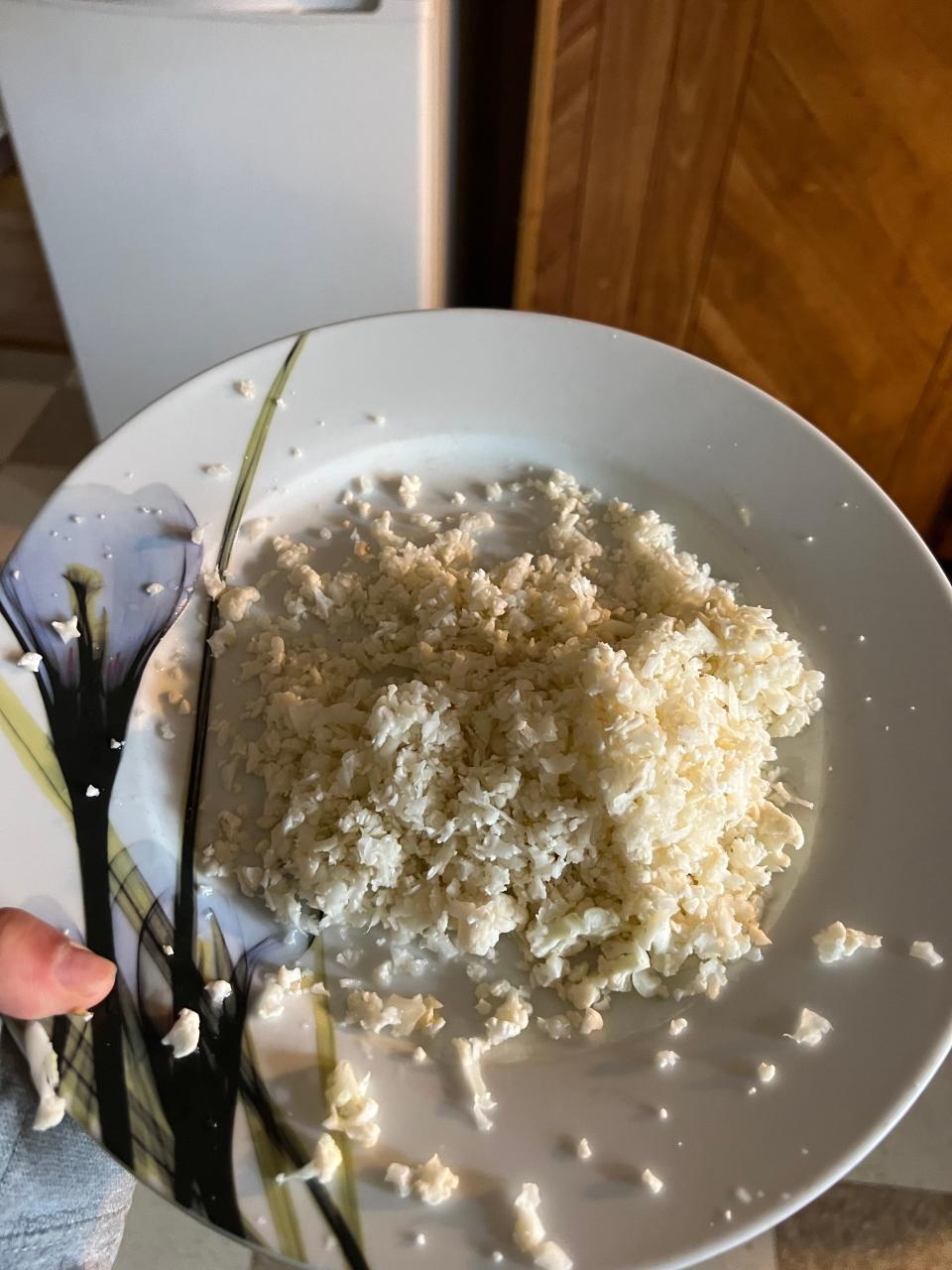
A masala dabba is an Indian mother's magical spice box
She put me to work grating the cauliflower while she pulled out the cast iron pan, laid out the spices and chopped up some Thai chili peppers.
Once I had half a cauliflower grated, she brought me over to the masala dabba, her Indian spice box. A staple in our household that I've watched her use to make every family meal.
She added a little bit of neutral oil to her deep, wok-like pot and set it over a medium flame. Then she began directing me to add spices, starting with cumin seeds and bright yellow haldi. We let it sizzle for a minute before she ordered me to add a dash of paprika, ground cumin, salt and amchur mango powder and to mix them.
She turned the heat to low and motioned for me to add the grated cauliflower and Thai chili peppers. I tossed them in spices and oil until it was yellow from the turmeric and the kitchen was filled with the smell of blooming spices. Mom stepped in and put a lid on the pot, explaining that it would help the cauliflower soften and steam. After five minutes, I took the pan off the stove and set it aside to cool.
That was the easy part.
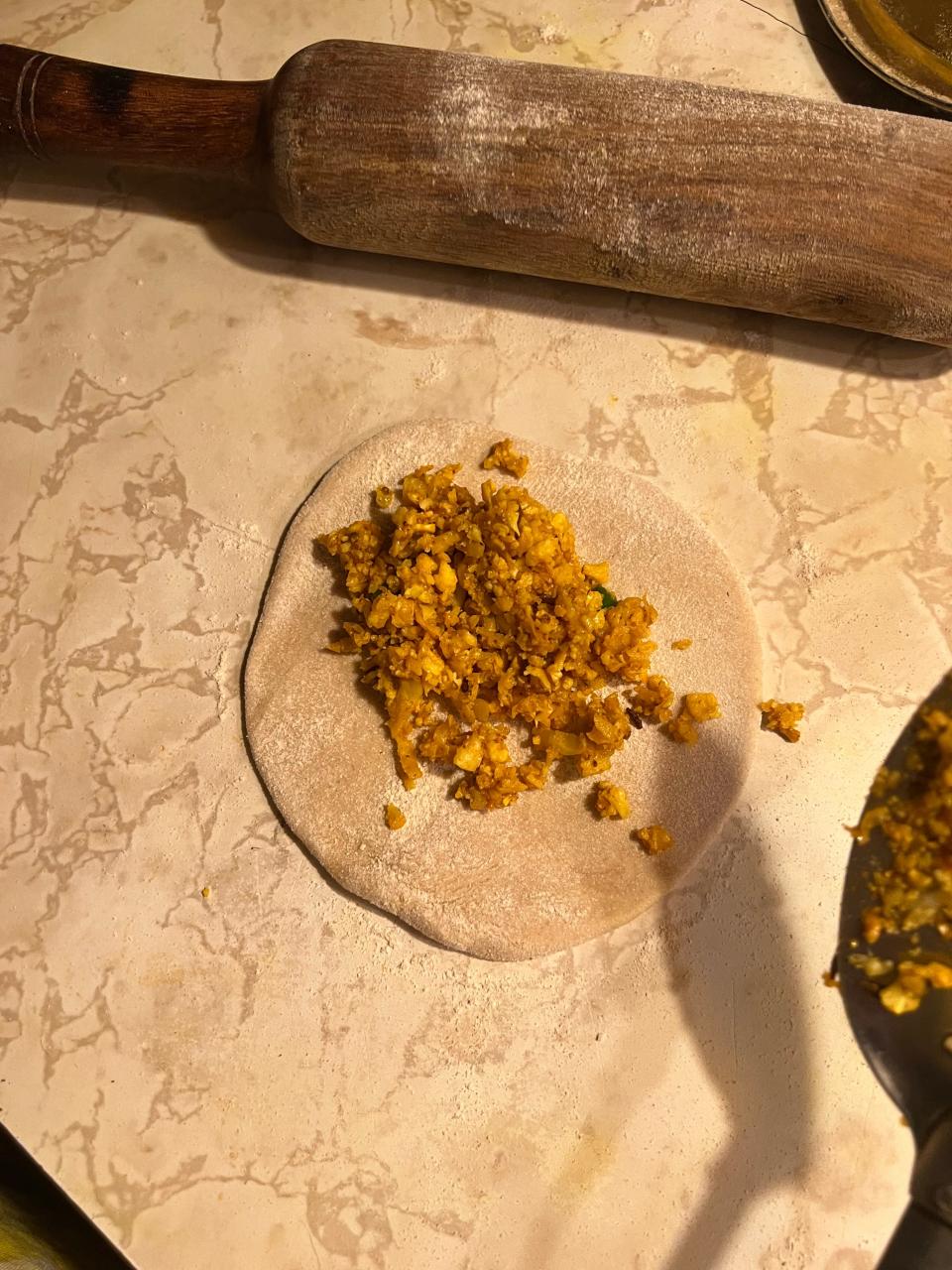
It was humbling trying to replicate something my mom made look effortless
With the filling made, it was time to start rolling dough. My mom already made a dough of atta or whole wheat flour, salt, water and oil, saving me from doing a lot of kneading. We began rolling 2-inch dough balls, and while I struggled to grab enough dough or had it stick to my hands, she was juggling the perfectly formed spheres back and forth effortlessly. In the time it took me to make just one, she had already made three.
She sprinkled a little bit of flour onto the countertop and I attempted to use the rolling pin to flatten each ball into a circle, making it as thin, but not too thin, as it needed to be strong enough to hold the cauliflower mixture.
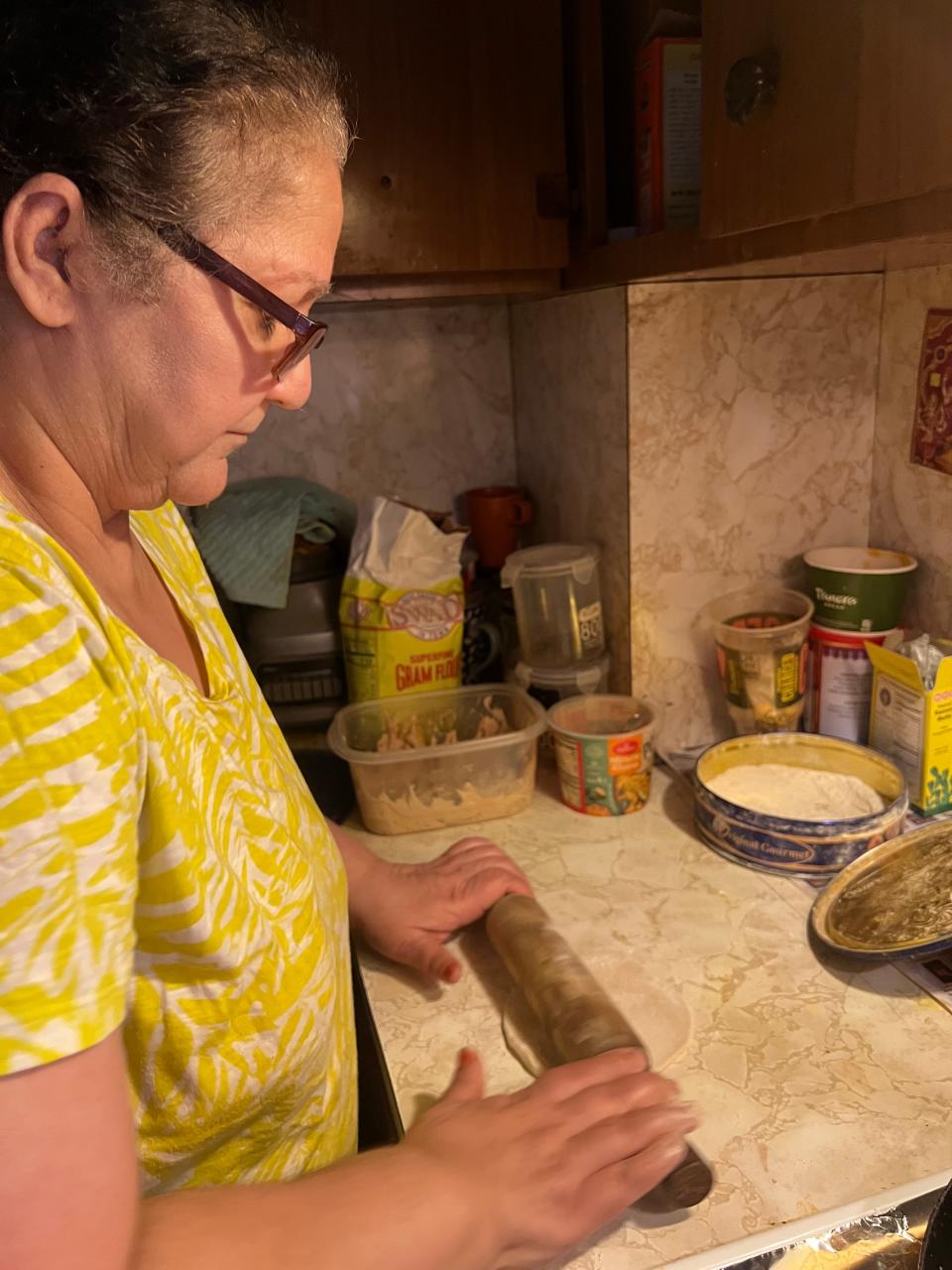
"Not like this, hurry and roll up your sleeves," my mom said as I awkwardly balanced the rolling pin under my hands.
She stepped in to show me how it was done moving, quickly rolling while rotating the dough. Every move was purposeful and natural. I looked on, amazed. I wondered if I would ever be able to replicate her skills.
She let me take another shot at it— with my sleeves literally rolled up and out of the way. I worked rapidly and quietly, trying to keep up with her while also trying to pay attention to her directions.
We formed a miniature assembly line. I added a few tablespoons of cauliflower to the rounds of dough and my mother folded the edges and pinched them closed before flattening each one with her hand. She passed them back to me, instructing me to roll them out a little bit more.
The soft and sticky dough became more manageable as it absorbed the dry flour on the counters. By our last paratha, I felt like I was getting the hang of it.
She oiled a flat cast iron pan and set it over high heat.
"Now add it to the pan," she directed as I slowly lifted the rolled-out dough off the counter.
As the delicious smell of freshly cooked bread started to seep through the air, I peeked at the underside to see if it was golden brown. I looked to her. She nodded in agreement — it was time to flip.
I've watched my mother flip parathas with her bare hands my whole life. When I awkwardly grabbed at the bread, trying not to burn myself, she laughed and handed me a spatula.
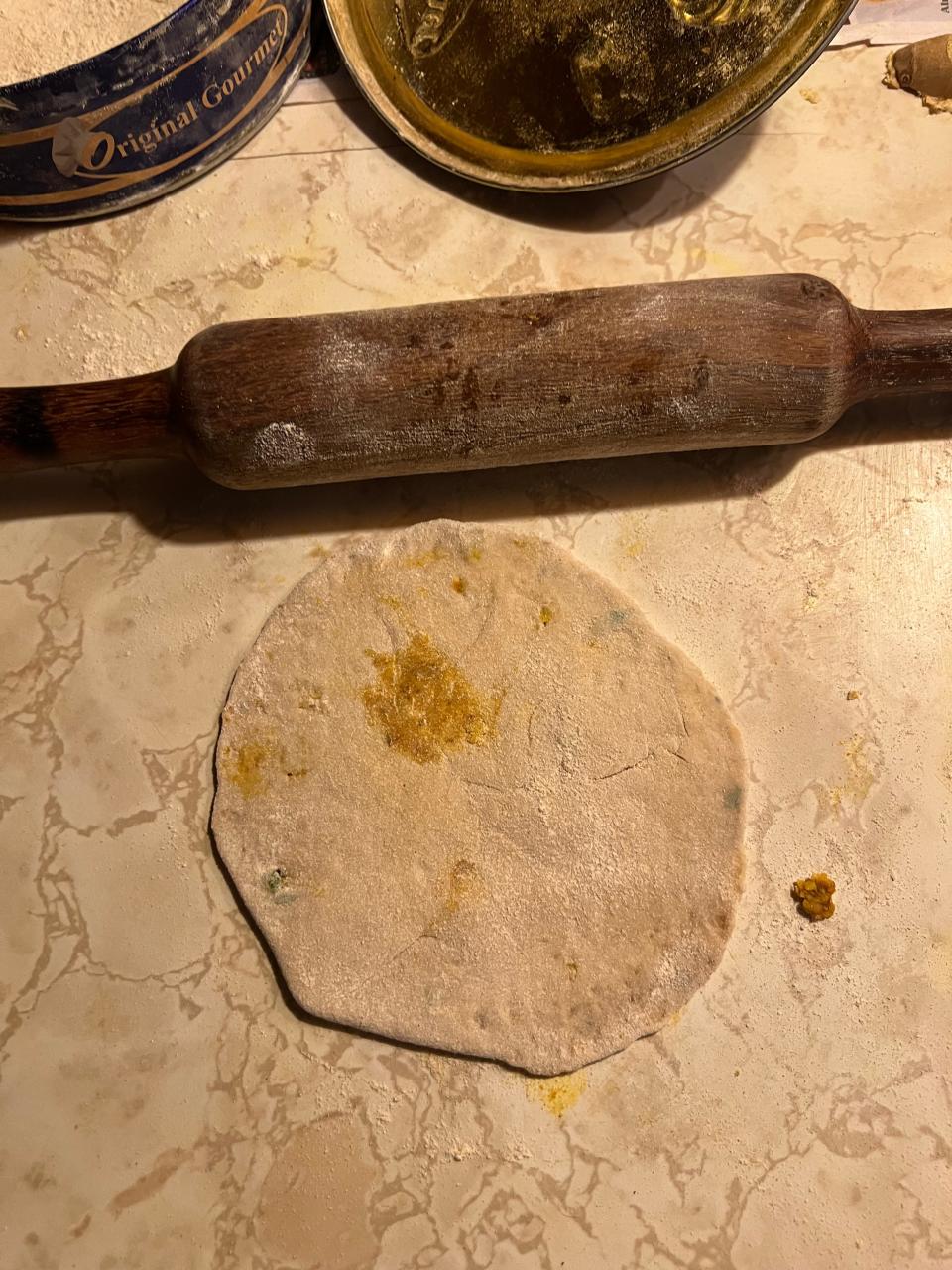
The kitchen was the place mom could make our lives more joyful, no matter what else was going on
That's when it clicked. She was totally unafraid of burning her hands, or of anything else in the kitchen because she had made this space her home.
She showed her love and affection by making food for others, whether for large family gatherings or while babysitting her grandkids. This was a place where she was in control, no matter what was going on in other parts of her life. Through her children moving out, separating from my father and health scares, she knew that in the kitchen, she had the power to make our world a bit more joyful.
Even more than learning her recipes, I want to find that confidence and ease.
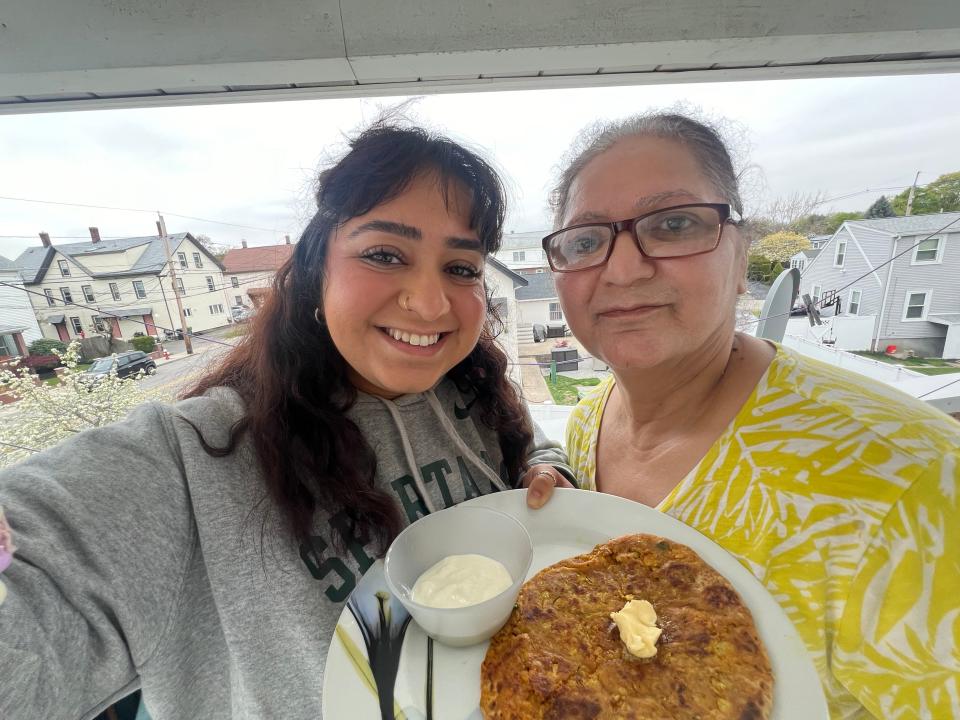
The smell of crisping bread reminded me there was a paratha I needed to keep from burning.
I held my breath and flipped it. The second side had a perfect char to it. My mom stepped next to me.
“Oh, wow it looks good,” she smiled, adding a dollop of butter on top.
I could tell she meant it. I was satisfied before even tasting it.
We added some fresh yogurt to our plate of gobi parathas and went to sit outside. I let her try it first, handing her a torn piece dipped in the yogurt. I took a photo and asked her what she thought.
"Tastes good, just like your mom makes," she joked. "You're a pro now."
I took a bite. It was exactly how I remembered.
Gobi paratha recipe
Makes: About 4-5 gobi parathas
Ingredients:
For the dough:
1 ¼ cup whole wheat flour
⅓ teaspoon of neutral oil, more as needed
⅓ teaspoon of salt, more as needed
⅓ cup of water or more as needed
For the cauliflower mixture:
Half a head of cauliflower
5 teaspoons neutral oil, more as needed
⅓ teaspoon cumin seeds
⅓ teaspoon tumeric (haldi)
⅓ teaspoon of paprika
⅓ teaspoon of ground cumin
⅓ teaspoon salt
⅓ teaspoon of amchur or mango powder
2 Thai chilis, or omit if you don't want them spicy
2 teaspoons whole wheat flour (for dusting the countertop)
Instructions:
To make the dough, add whole wheat flour, oil and salt to a bowl. Then slowly pour in the water, mixing with your hands until combined. Kneed into a ball, cover and set aside for about 30 minutes.
Grate half a head of cauliflower and set aside.
Add 2 teaspoons of neutral oil (or more as needed) to a wok-like pot over medium heat. Add the cumin seeds and turmeric, let brown for about a minute. Add the paprika, ground cumin, salt and amchur. Mix and turn the heat to low.
Once well combined, add the grated cauliflower and chilis. Mix until fully coated, cover with a lid and steam over low heat for about five minutes, stirring occasionally. Remove from heat and set aside to cool.
Add a little dry whole wheat flour to your counter. Form four to five 2-inch balls of dough.
Roll out the dough into circles on your floured surface using a rolling pin, to about ¼-inch thick.
Add a few tablespoons of the cooled cauliflower mixture to the center of a rolled-out dough circle. Take the sides of the dough and pinch closed at the top, making sure all the cauliflower is enclosed. Then flatten with your hands and roll out the dough again. Repeat with remaining dough balls and filling.
Add some of the neutral oil to a flat cast iron pan and place over high heat. Cook paratha on the hot pan for 2-3 minutes. Add a little oil to the raw dough side of the paratha and flip. Cook for about 2 minutes, and check for doneness. Continue flipping until both sides are golden brown.
Wrap the finished parathas in paper towel and tin foil to keep warm while you make the rest of the parathas.
Plate paratha with a dollop of butter on top and a side of plain yogurt. Eat at once.
Reach the reporter at dina.kaur@arizonarepublic.com. Follow @dina_kaur on X, formerly known as Twitter.
Support local journalism. Subscribe to azcentral.com today.
This article originally appeared on Arizona Republic: Making mom's gobi paratha recipe made me see her in a new light

